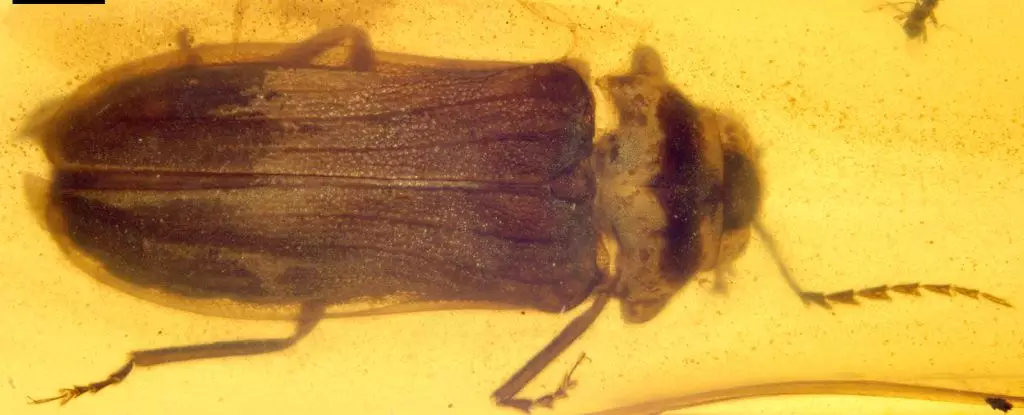As twilight descends on warm summer nights, one of nature’s most enchanting displays comes alive: the gentle flickering of fireflies. These delicate beetles, belonging to the Lampyridae family, comprise around 2,500 species globally and have fascinated humans for centuries. Their bioluminescent glow serves multiple purposes, primarily attraction and deterrence; however, the evolutionary path that led to this captivating trait remains partially obscured. Recent discoveries, including a remarkable specimen preserved in amber, shed light on the ancient history of these glowing insects, revealing significant insights into their evolutionary journey.
A groundbreaking study led by paleontologist Chenyang Cai from the Chinese Academy of Sciences has unveiled a firefly encased in 99-million-year-old amber discovered in Kachin State, Myanmar. This specimen, identified as *Flammarionella hehaikuni*, presents a deeper understanding of firefly evolution. Impressively, the insect’s glowing rear suggests that ancestors of modern fireflies developed their luminescent abilities during the Mesozoic era, long before the age of dinosaurs came to a close.
This discovery is not isolated; it joins the ranks of prior findings, including *Protoluciola albertalleni*, which also exhibited remarkable preservation. The presence of multiple species within the same amber deposits indicates a rich diversity of bioluminescent beetles during this ancient period, reinforcing the notion that evolution of luminescence was well underway millions of years ago.
The glowing abdomens of fireflies are not merely for aesthetic wonder; they serve crucial biological functions. One of the primary uses of their light is to attract potential mates, as male fireflies employ their distinctive flashing patterns to signal females. Additionally, the light acts as a warning to predators, revealing the potential toxicity of certain firefly species. Recent scientific discussions have ignited debate over the initial benefits of bioluminescence, with evidence suggesting that this trait may have evolved before the presence of toxins—challenges our understanding of early firefly adaptations.
The presence of both courtship signaling and predator deterrence adds layers to the complexity of firefly evolution. It raises compelling questions: What other functions might bioluminescence have served in these insects’ past? Could there have been environmental factors that favored such an adaptation long before the benefits of toxicity were realized?
The physical characteristics of *Flammarionella hehaikuni* provide additional intriguing information about the evolution of fireflies. This specimen displays densely covered antennae with setae, which is not found in present-day beetles of this kind. Such adaptations increase the sensory capabilities of the insect, likely enhancing its ability to detect pheromones and navigate its environment more effectively.
The discovery of significant differences in the lantern structures among related species further illustrates that even millions of years ago, fireflies exhibited a diversity of forms and functions in bioluminescence. Each lantern’s design reflects evolutionary responses to environmental pressures, mating rituals, and predation, highlighting the intricate dance of adaptation that continues to shape life on Earth today.
The presence of *Flammarionella hehaikuni* in amber not only provides a tangible link to the past but also signifies the importance of ongoing fossil studies in elucidating the evolutionary history of fireflies. Researchers are keen to locate more specimens, particularly males of the species, which would deepen the understanding of sexual dimorphism in fireflies and the role it played in their evolutionary processes.
As scientists delve deeper into these ancient treasures preserved in amber, they hope to unravel the mysteries of bioluminescence in insects. This research could illuminate not just the life of fireflies but also offer broader insights into the adaptations and environmental interactions of ancient ecosystems.
The enchanting light of fireflies encapsulates more than mere beauty; it is a beacon illuminating the annals of evolutionary science. As ongoing studies reveal greater intricacies in their past, we remain reminded of the interconnectedness of all life forms, dancing through time in the twilight glow.

